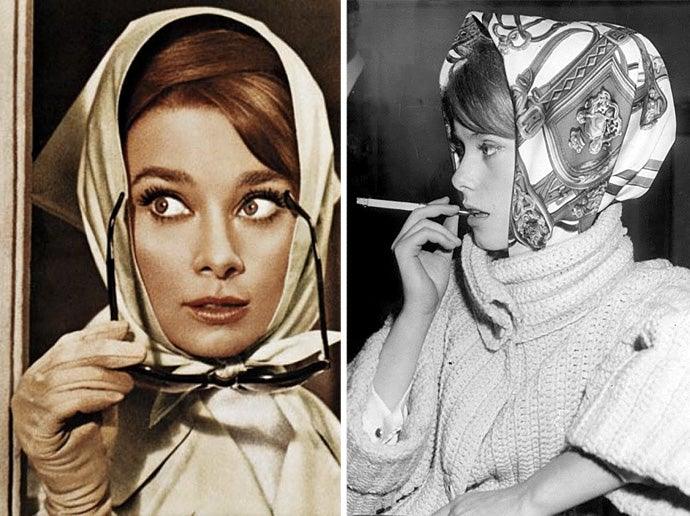
The scarf, a timeless and classic accessory that has existed for millennia and still has not lost its symbol of elegance and beauty. However, its functionality has changed throughout history. Are you curious about how the scarf became the fashion accessory it is today?
The story of the Scarf
1350 BC
The modern scarf as we know it today had its origins in ancient Egypt. Here the ancient Egyptians wore scarves to show their social status. Egyptian Queen Nefertiti is said to have worn a "tightly woven scarf on top of her iconic headdress"
8th century BC
The Roman men wore a ribbon of linen cloths around their necks or tied around their waists. They use this linen for practical reasons, including to wipe the sweat off their faces.
230 BC
Under Chinese Emperor Cheng, scarves were used to mark military rank. Officers wore a silk scarf while the regular soldier wore a cotton scarf, tied around his neck.
50 BC - 60 AD
In Rome, Roman senators added a silk ribbon or scarf to their togas. The silk scarf was also a status symbol here. Among other things, it is said that Emperor Nero would not appear in public without wearing a silk scarf around his neck.
12th century
In the Middle Ages, rich cheeks wore tall and beautiful headdresses with fine scarves hanging from them. The poor women, who could not afford the new fashion headgear, wore scarves made of linen, tied around their heads.
17th century
The tie is a collar that was the forerunner of the modern tailor-made tie. The claim is of military origin and was part of the uniform of the Croatian regiment fighting for Louis XIV. The tie scarf they wore was made of linen and with laced edges.
This later developed into the so-called Steinkirk tie. This particular scarf was made of luxurious materials and tied loosely around the neck. It replaced the stiff ripples that men and women used to wear. The Steinkirk collar became very popular in the artistic circles, among other things, architects and artists took it upon themselves for a more creative expression of their often, formal clothes.

19th Century
It was not until the 19th century that scarves became the popular fashion accessory as we know it today. In the beginning, the scarf was typically a cloth used as a sweat cloth or washcloth. That changed, however, as fashion designers saw the potential in the materials and designs exported out of the eastern regions like India.
Fashion brands - 19th century
In 1837, the fashion brand Hermès emerged. They became famous for their beautiful and adventurous graphic patterns on silk scarves. Burberry was also one of the first fashion houses to use the scarf as a fashion accessory in 1856 with their distinctive checkered scarves. The 2 brands are still known for their scarves and have become an internationally recognised symbol for their brands with their patterns and designs. This brought scarves into the modern world to what we see today, especially in the upper class.
The scarf really became a fashion item in the 20th century, where Brigitte Bardot, Audrey Hepburn and Grace Kelly helped to make the scarf one of the most essential, elegant and versatile accessories. The scarf was thus made a must-have, to have the wardrobe and to the classic and elegant accessory it is today.
We have made a small guide on how to style your scarf. the guide can be found here
Scarves from Flora Danica Denmark
Flora Danica is a Danish accessory and fashion brand. Our mission is to spread the history and knowledge of the Danish cultural heritage, The Flora Danica botanical works. We try to do this through a beautiful, classic, timeless, and unique collection of the scarf with motifs and prints inspired by the Flora Danica botanical works and illustrations. The story of Flora Danica is exciting, unique and the beautiful floral illustrations has had great significance for Denmark. You can read more about Flora Danica here.
You will find our unique collection of Flora Danica scarves here







